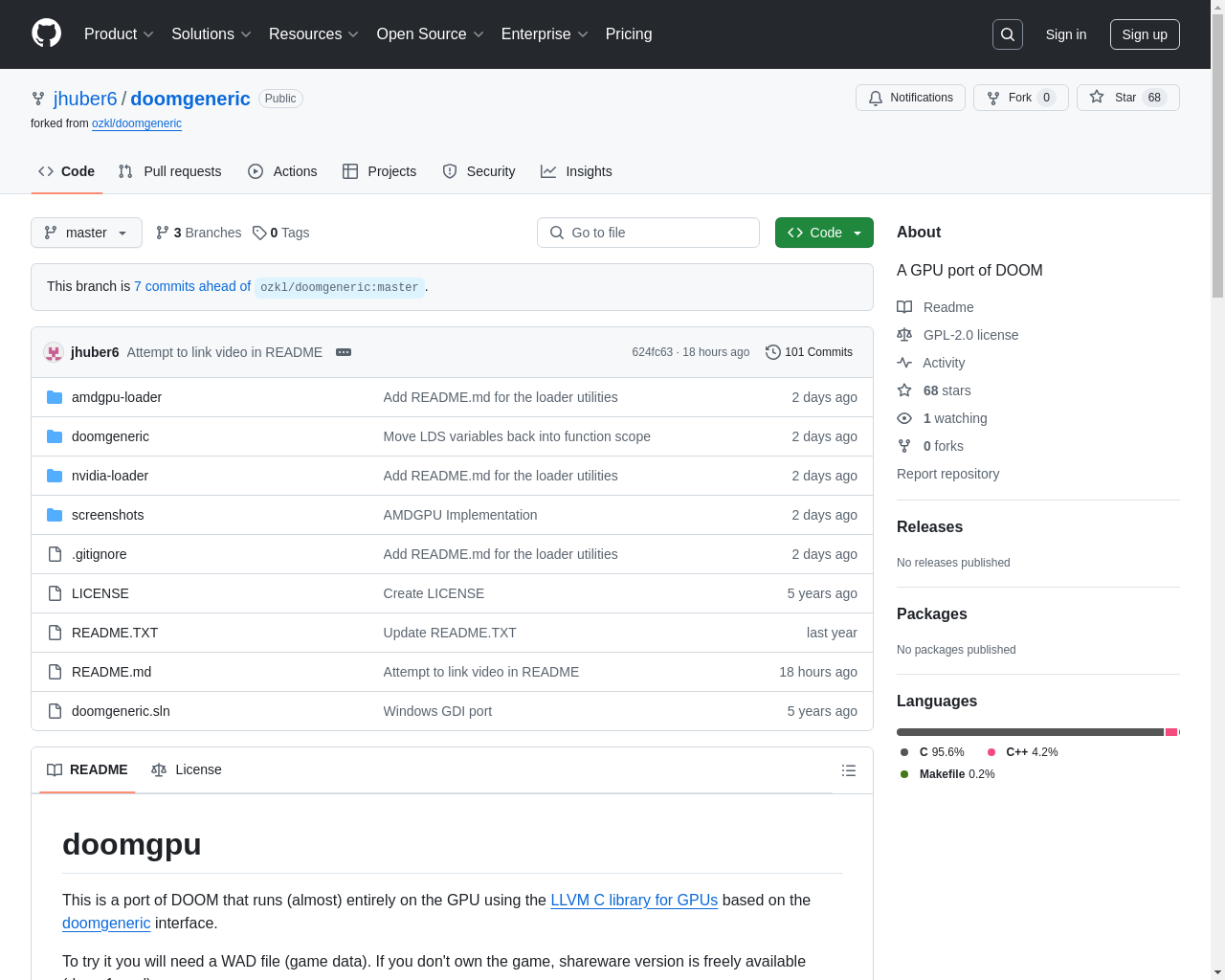

Highlight 1
Successfully utilizes GPU capabilities to enhance the performance of DOOM, providing a smooth gaming experience with better frames per second.
Highlight 2
The cross-compilation approach via Clang allows for compatibility across different GPU manufacturers, making it accessible to a wider audience.
Highlight 3
Integration with both HSA for AMD GPUs and CUDA for NVIDIA ensures it uses vendor-specific optimizations effectively.

Improvement 1
The current architecture still relies heavily on the CPU for I/O operations, which could be optimized further to reduce latency.
Improvement 2
Enhancing the documentation would benefit developers looking to understand the setup process and potential backend functionalities better.
Improvement 3
Expanding compatibility with more modern games or applications could broaden the project's reach and usability.
Product Functionality
Implement more comprehensive error handling during gameplay on various hardware to enhance stability across different systems.
UI & UX
Improve the overall user interface by creating a more organized structure in the documentation, which could help new users navigate through setting up and using the product.
SEO or Marketing
Consider creating a blog or regular updates on the project’s development to engage the community and improve visibility on search engines.
MultiLanguage Support
Introduce multi-language support for documentation and user guides to reach a broader international audience.
- 1
What GPUs are supported by Doomgeneric?
Doomgeneric runs on both AMD and NVIDIA GPUs, allowing a wide range of users to experience the project.
- 2
Is any part of the game running on the CPU?
Yes, currently, the CPU handles standard I/O, key input reading from SDL, and writing the rendered framebuffer to the SDL window.
- 3
What changes were made to the original DOOM source code?
The only modifications involved adapting the code for multi-threaded rendering, with the aim of achieving better frame rates.
